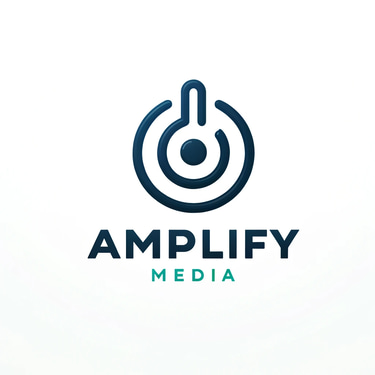Mastering Online Marketing and Advertising with Google Ads, Bing Ads, and More
In the digital age, mastering online marketing and advertising is crucial for businesses looking to boost their visibility and drive conversions. Platforms like Google Ads and Bing Ads offer powerful tools for reaching targeted audiences, but understanding how to leverage these tools effectively can be challenging. At Amilify Media, we specialize in helping our clients navigate the complexities of online advertising to achieve remarkable results. Here’s an in-depth look at how to utilize Google Ads, Bing Ads, and other search engine marketing (SEM) platforms to elevate your business.
5/25/20243 min read


Understanding the Basics of Google Ads and Bing Ads
Google Ads and Bing Ads are two of the most prominent platforms for online marketing and advertising, each offering unique features and benefits. Understanding their fundamental concepts is essential for crafting effective online marketing strategies.
Google Ads operates on a pay-per-click (PPC) model where advertisers bid on keywords relevant to their business. When users search for these keywords, ads appear at the top of the search results, driving traffic to the advertiser's website. Bing Ads functions similarly but targets a different portion of the search engine market, offering opportunities to reach a broader audience.
Keywords play a crucial role in both platforms. Advertisers must conduct thorough keyword research to identify terms that potential customers are searching for. The selection of high-relevance keywords ensures that ads reach the right audience, increasing the likelihood of conversions.
Ad formats on Google Ads include text ads, display ads, video ads, and shopping ads, each catering to different marketing objectives. Bing Ads also offers similar formats, allowing advertisers to choose the type that best suits their campaign goals. Crafting compelling ad copy and using eye-catching visuals are essential to capture the audience's attention.
Bidding strategies are vital in managing advertising budgets effectively. Both Google Ads and Bing Ads offer automated and manual bidding options, allowing advertisers to control their spending while optimizing for clicks, impressions, or conversions. Understanding the nuances of each bidding strategy can significantly impact campaign performance.
Setting up accounts on both platforms is straightforward. Advertisers need to create an account, set their budget, and select their target audience. Creating effective ad campaigns involves writing engaging ad copy, designing appealing visuals, and setting appropriate bids for the chosen keywords. Targeting options, such as geographic location, age, gender, and interests, help reach specific demographics, ensuring that ads are shown to the most relevant audience.
By mastering these foundational elements of Google Ads and Bing Ads, advertisers can drive substantial traffic and conversions, making the most of their online marketing efforts.
Advanced Strategies for Maximizing ROI with SEM Platforms
To truly master online marketing and advertising with SEM platforms like Google Ads and Bing Ads, businesses must adopt advanced strategies that go beyond basic setup. A key area to focus on is advanced keyword research. Utilize tools such as Google Keyword Planner and Bing Ads Intelligence to uncover high-value keywords with lower competition. This enables you to target more specific audience segments, which can lead to a higher ROI.
Another critical strategy is the use of negative keywords. By identifying and excluding terms that are not relevant to your business, you can prevent your ads from appearing in irrelevant searches, thereby saving budget and improving ad relevance. This practice ensures that your ads are only shown to users who are more likely to convert.
Optimizing ad copy is essential for achieving higher click-through rates (CTR). Craft compelling headlines and descriptions that highlight unique selling points and include a strong call-to-action. Experiment with different messaging and formats to determine what resonates most with your target audience.
Ad extensions are another powerful tool for enhancing the effectiveness of your ads. Utilize site link extensions, callout extensions, and structured snippets to provide additional information and value to potential customers. These extensions can increase the visibility and appeal of your ads, leading to higher engagement rates.
Setting up conversion tracking is crucial for measuring the success of your campaigns. By tracking conversions, you can gain insights into which ads and keywords are driving the most valuable actions, such as purchases or sign-ups. This data is vital for making informed decisions and optimizing your campaigns for better performance.
Analyzing campaign performance through detailed metrics and reports allows you to identify trends and areas for improvement. Regularly review key performance indicators (KPIs) such as CTR, conversion rate, and cost per conversion to assess the effectiveness of your strategies and make necessary adjustments.
A/B testing is an invaluable method for refining your ads and landing pages. By comparing different versions, you can determine which elements perform best and continuously improve your marketing efforts. This iterative process helps in maximizing ROI by ensuring that your campaigns are always optimized for peak performance.
Consistent refinement and adjustment based on data insights are essential for staying competitive in the dynamic landscape of online advertising. By implementing these advanced strategies, businesses can significantly enhance their SEM campaigns and achieve superior results.
